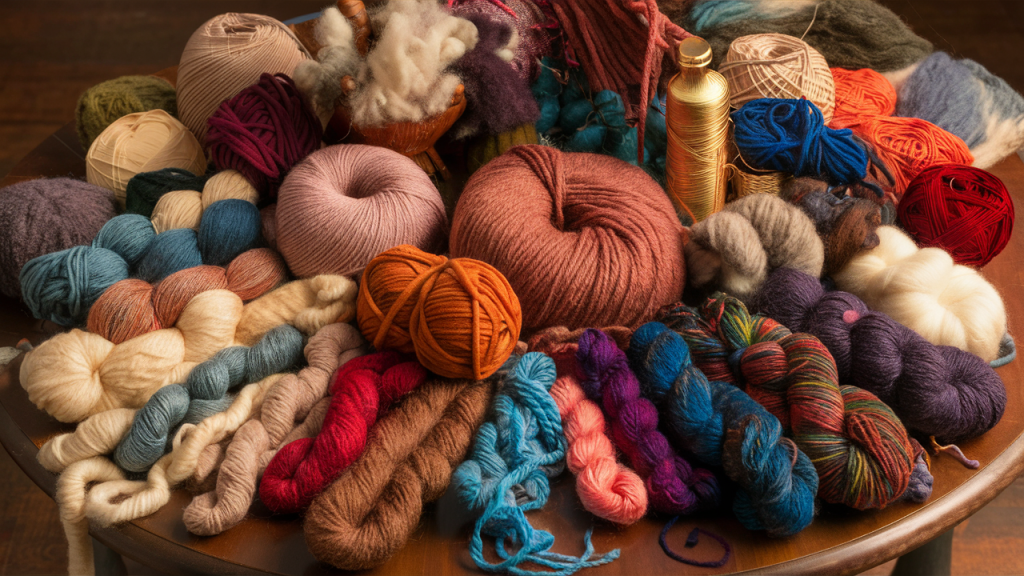Choosing the right yarn can make all the difference in your project.
If you’re knitting a sweater or crocheting a blanket, the type of yarn you use affects the texture, durability, and overall look.
With so many options available, it’s easy to feel overwhelmed. But don’t worry—I’m here to help.
I’ll explain the most common yarn types and help you choose the best one for your craft.
My goal is to make yarn selection simple.
By the end, you’ll feel confident in your choices, and your projects will turn out just the way you imagined.
Let’s get started!
Types of Yarn and Their Uses
In this section, I will elaborate on different types of yarn and their specific uses. Each type has unique qualities that make it perfect for certain projects.
Here, I’ll discuss how to use them and highlight what makes them stand out.
1. Wool Yarn
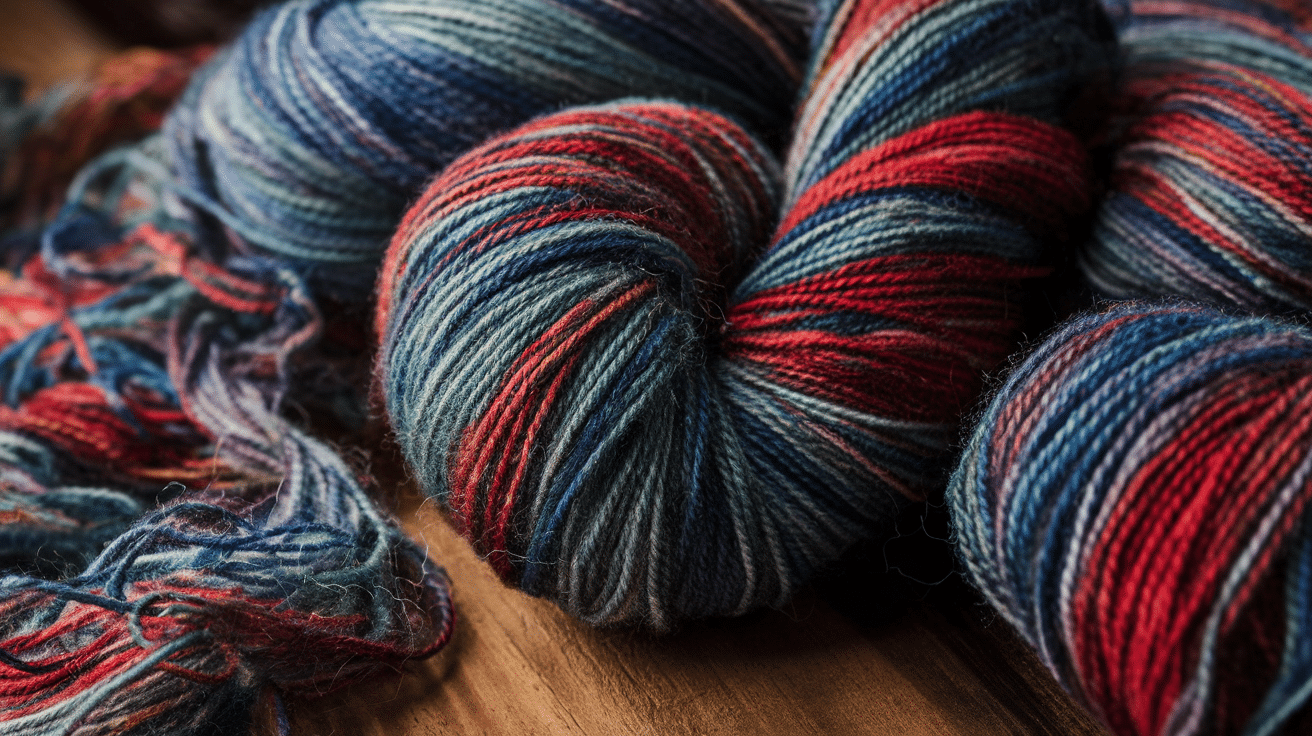
Wool yarn is ideal for making cozy, insulating garments such as sweaters, scarves, and hats.
Its natural fibers provide warmth, making it perfect for cold-weather clothing. It’s also widely used in blankets and other items that need extra warmth.
Unique features:
- It is naturally elastic and stretches to fit.
- Great for projects requiring shape retention.
- Offers moisture-wicking properties.
- It can be bulky or fine, giving flexibility in project options.
2. Cotton Yarn
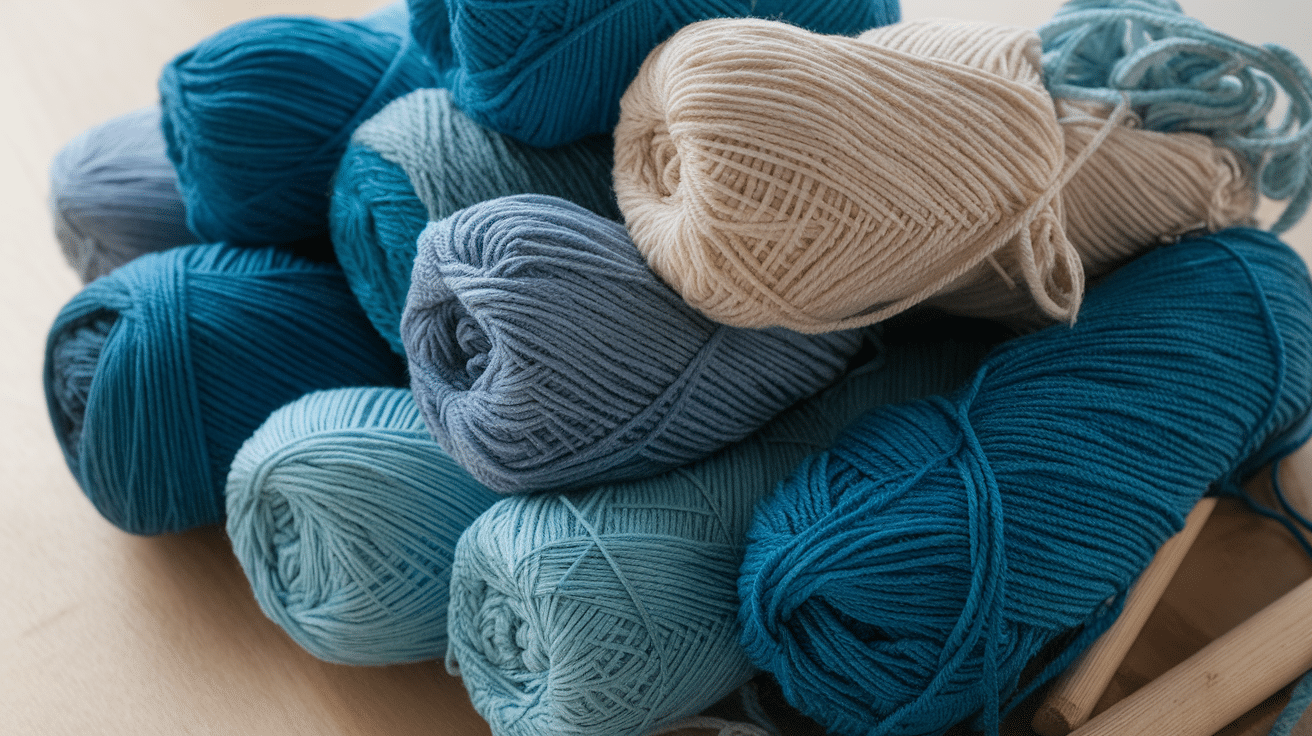
Cotton yarn is best used for lightweight and breathable projects like summer garments, dishcloths, and baby items.
Its smooth texture and absorbency make it perfect for both wearables and practical home décor items such as towels and baskets.
Unique features:
- Soft, breathable, and absorbent, perfect for warm-weather projects.
- Easily washable and durable.
- Eco-friendly, as cotton is biodegradable.
- It holds its shape well without stretching out.
3. Acrylic Yarn
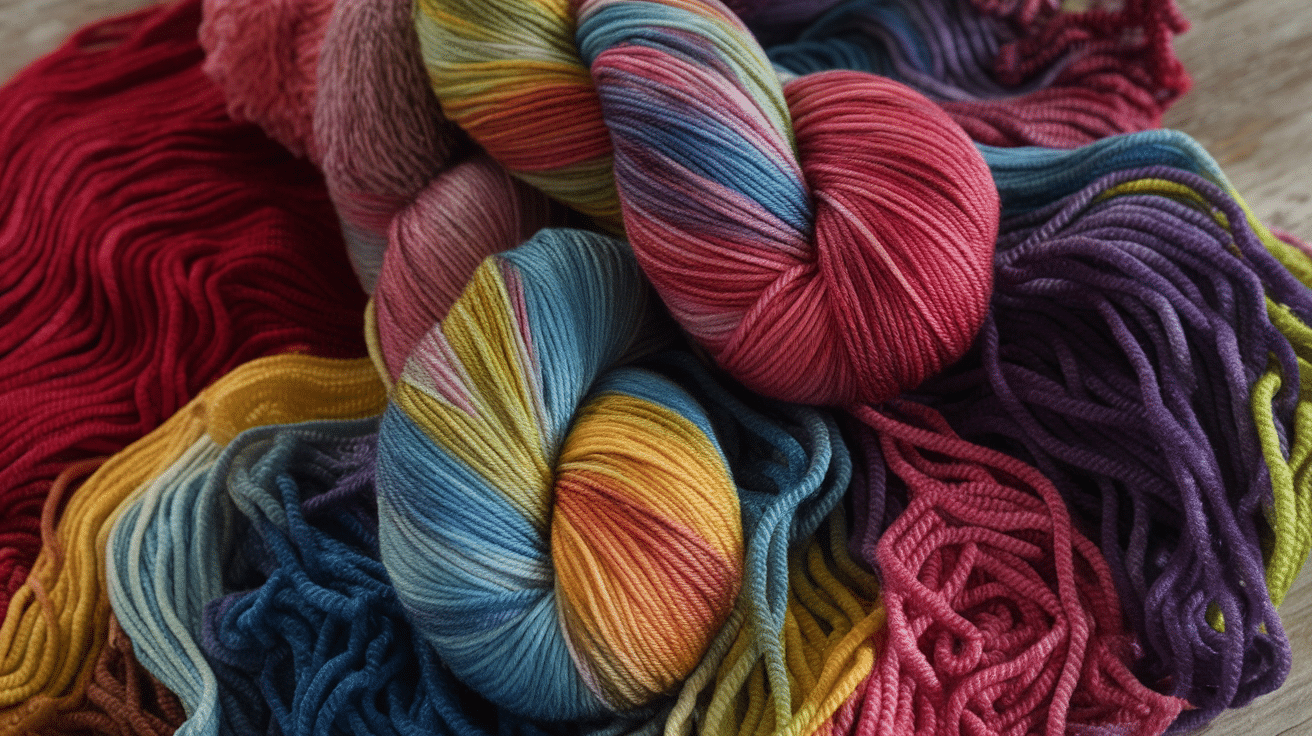
Acrylic yarn is known for being affordable and versatile, often used for everyday projects like blankets, hats, and scarves.
It’s easy to care for, as it’s machine washable and holds its color well, making it a popular choice for beginner crafters.
Unique features:
- Machine washable and fast-drying.
- Available in a wide range of colors.
- It is lightweight and soft, making it suitable for projects of all kinds.
- Durable and resistant to wear.
4. Alpaca Yarn
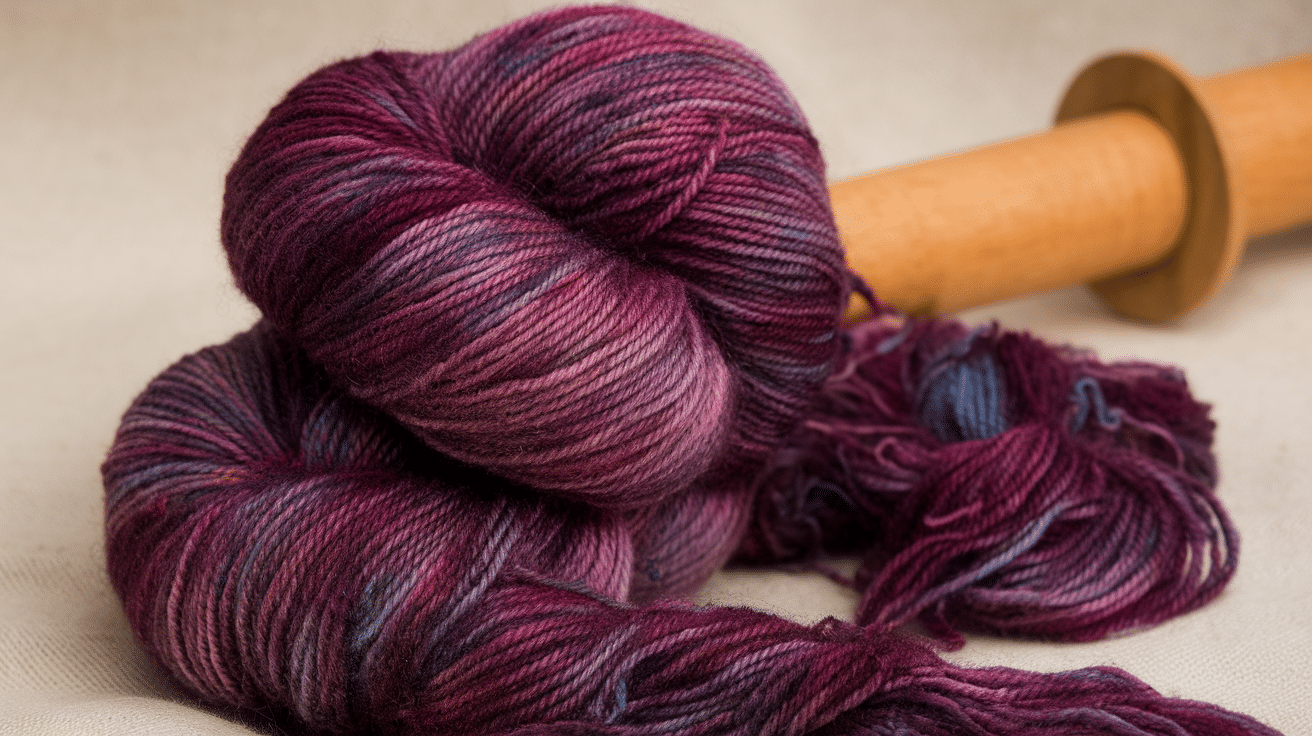
Alpaca yarn is famous for its luxurious softness and warmth, making it ideal for creating light yet warm garments such as shawls, sweaters, and scarves.
It’s often chosen for its delicate feel and is considered hypoallergenic, which makes it suitable for sensitive skin.
Unique features:
- Hypoallergenic and gentler on the skin than wool.
- Extremely warm, even in thin yarn form.
- Naturally silky and soft texture.
- It is lightweight, making it a good choice for layering.
5. Silk Yarn
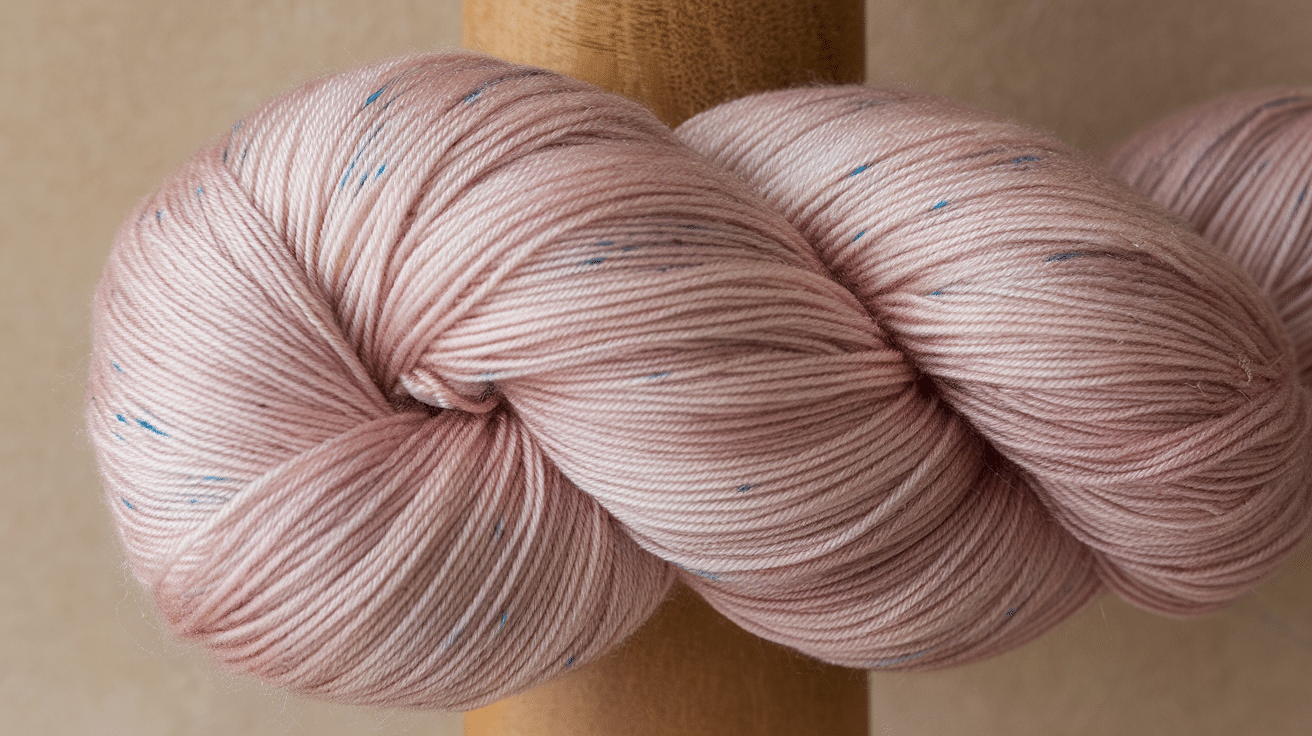
Silk yarn is known for its luxurious, shiny finish, making it the yarn of choice for high-end projects like shawls, fine garments, and accessories.
It adds a delicate and elegant touch to any project and is perfect for intricate lace work.
Unique features:
- Naturally shiny, creating a smooth and elegant finish.
- It is very lightweight and soft to the touch.
- Great for delicate, high-fashion items.
- Offers a soft drape and fluid movement in projects.
6. Bamboo Yarn
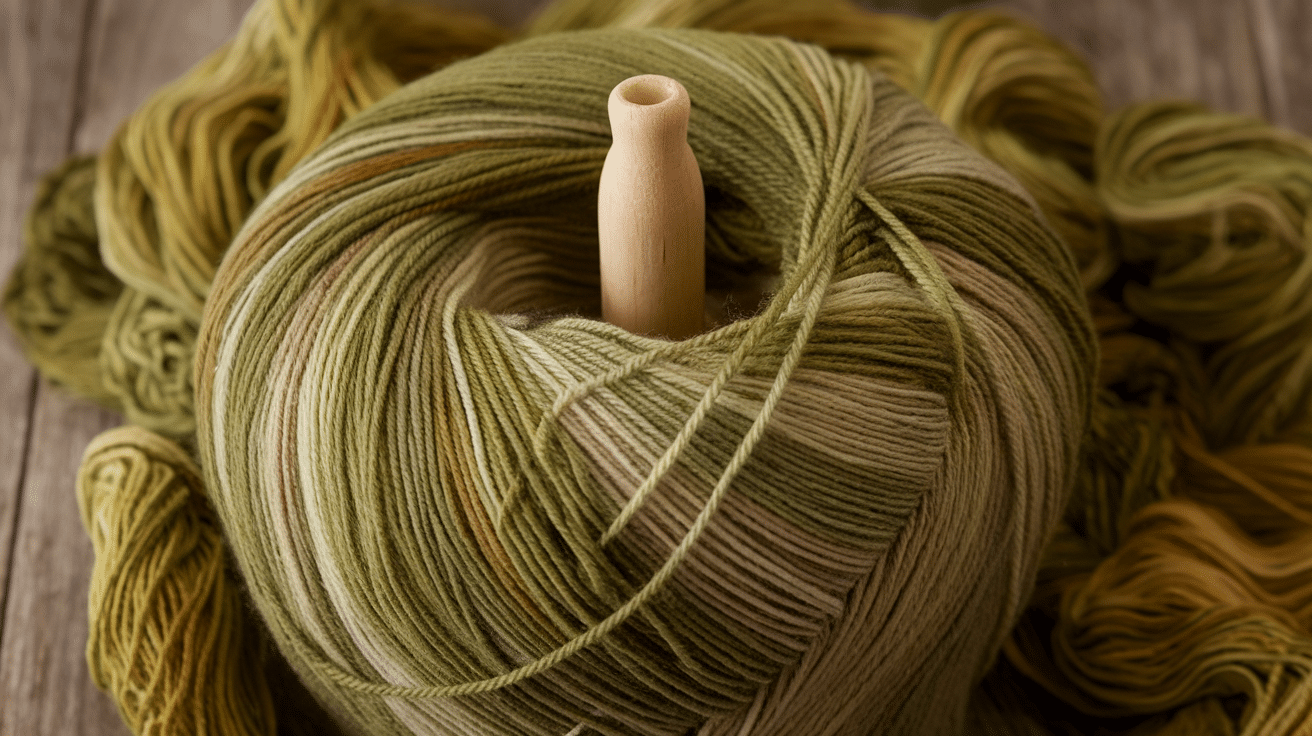
Bamboo yarn is a soft, eco-friendly option for light summer garments, baby clothes, and accessories. Its smooth texture and natural antibacterial properties make it a fantastic choice for eco-conscious crafters.
Unique features:
- Lightweight, breathable, and naturally antibacterial.
- Great for sensitive skin, including baby garments.
- Eco-friendly and sustainable.
- Softens over time and becomes more comfortable with wear.
7. Linen Yarn
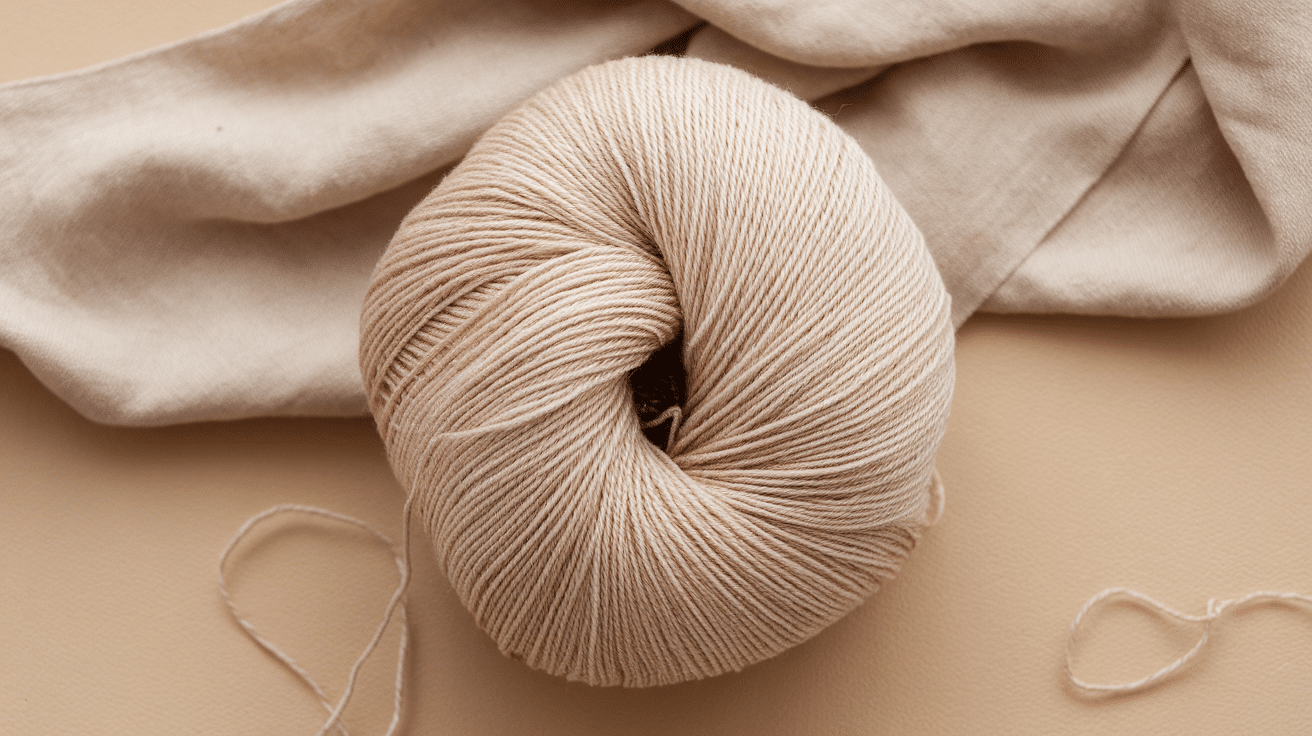
Linen yarn is perfect for warm-weather projects such as summer tops, light scarves, and beach bags. It has a natural, rustic look and tends to soften with use. It’s a strong, durable fiber that holds its shape over time.
Unique features:
- Strong, durable, and becomes softer after repeated use.
- Excellent for creating garments that hold their shape.
- It is ideal for lightweight and breathable summer pieces.
- Offers a crisp, textured finish.
8. Cashmere Yarn
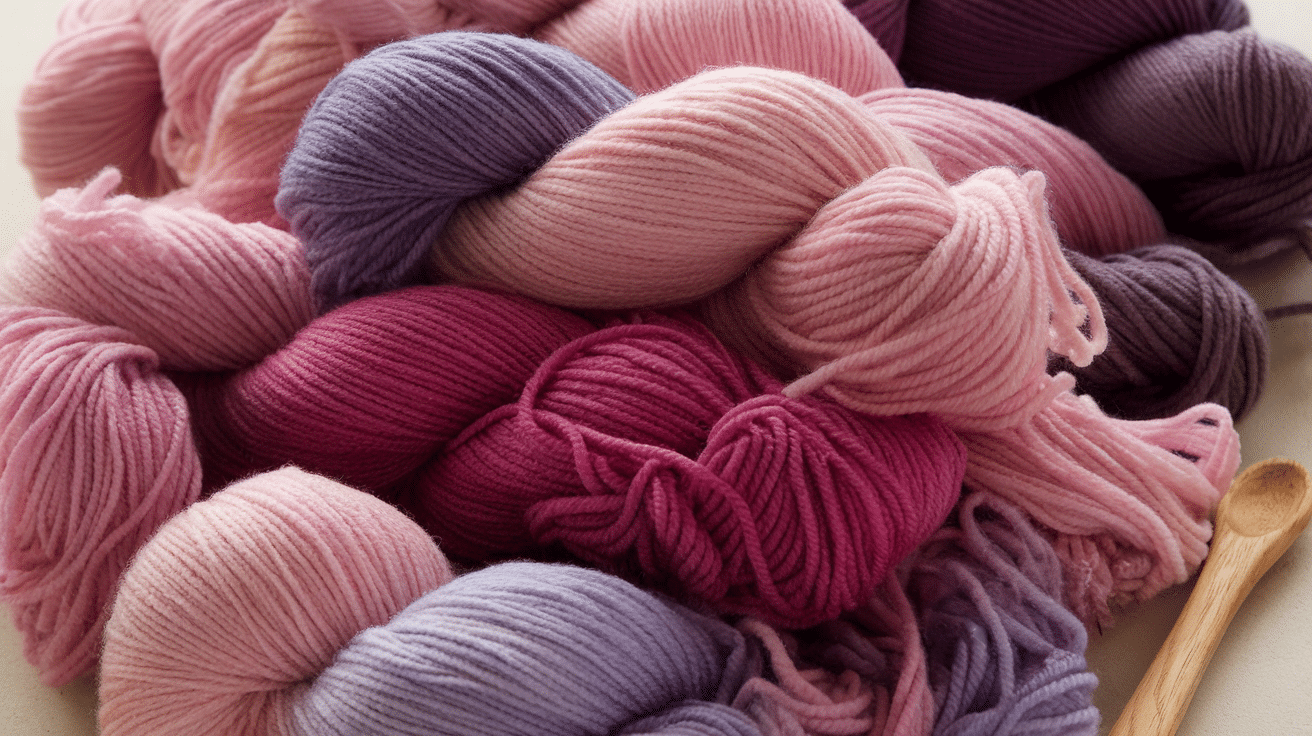
Cashmere yarn is incredibly soft and luxurious, making it perfect for creating high-end, cozy pieces like shawls, scarves, and cardigans.
This yarn is known for its lightness and warmth, which makes it suitable for those special projects where comfort and quality matter.
Unique features:
- Incredibly soft and smooth to the touch.
- It is lightweight yet offers excellent warmth.
- Great for making luxurious, special-occasion pieces.
- It’s ideal for those with sensitive skin, as it’s non-itchy.
9. Mohair Yarn
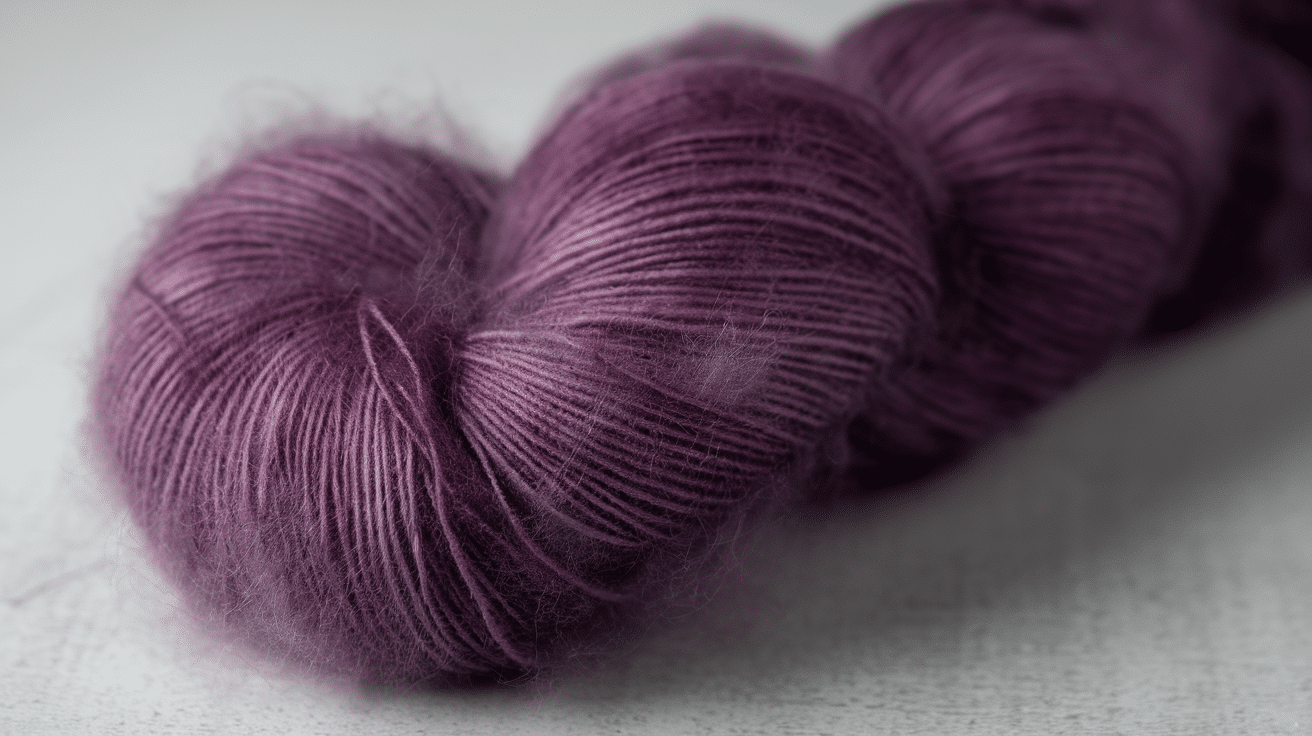
Mohair yarn is often used to add light, fluffy texture to projects like cardigans, shawls, and scarves. It’s lightweight, warm, and works well for layering, providing a soft, ethereal effect.
Unique features:
- Light, fluffy, and warm, providing a soft, airy texture.
- Adds volume and texture to projects.
- It is known for its sheen and shine, giving items a luxurious look.
- It works well with other yarns to add a delicate, textured finish.
10. Angora Yarn
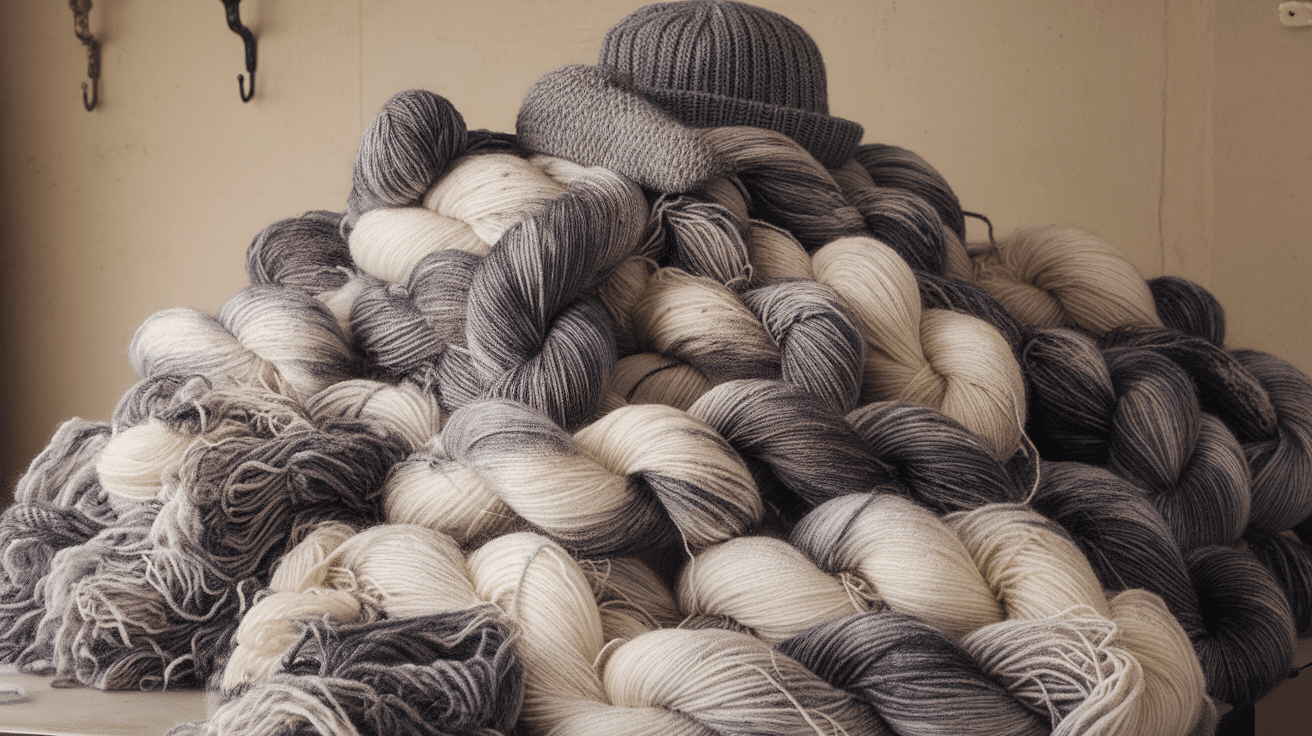
Angora yarn is made from the fur of Angora rabbits and is known for being ultra-soft and fluffy. It’s often used to create cozy sweaters, wraps, and scarves, providing warmth and a luxurious feel.
Unique features:
- Incredibly soft and fluffy, offering a luxurious feel.
- It is lightweight and provides excellent warmth.
- It has a natural halo that adds a fluffy, airy look to projects.
- Perfect for delicate, high-end garments.
11. Hemp Yarn
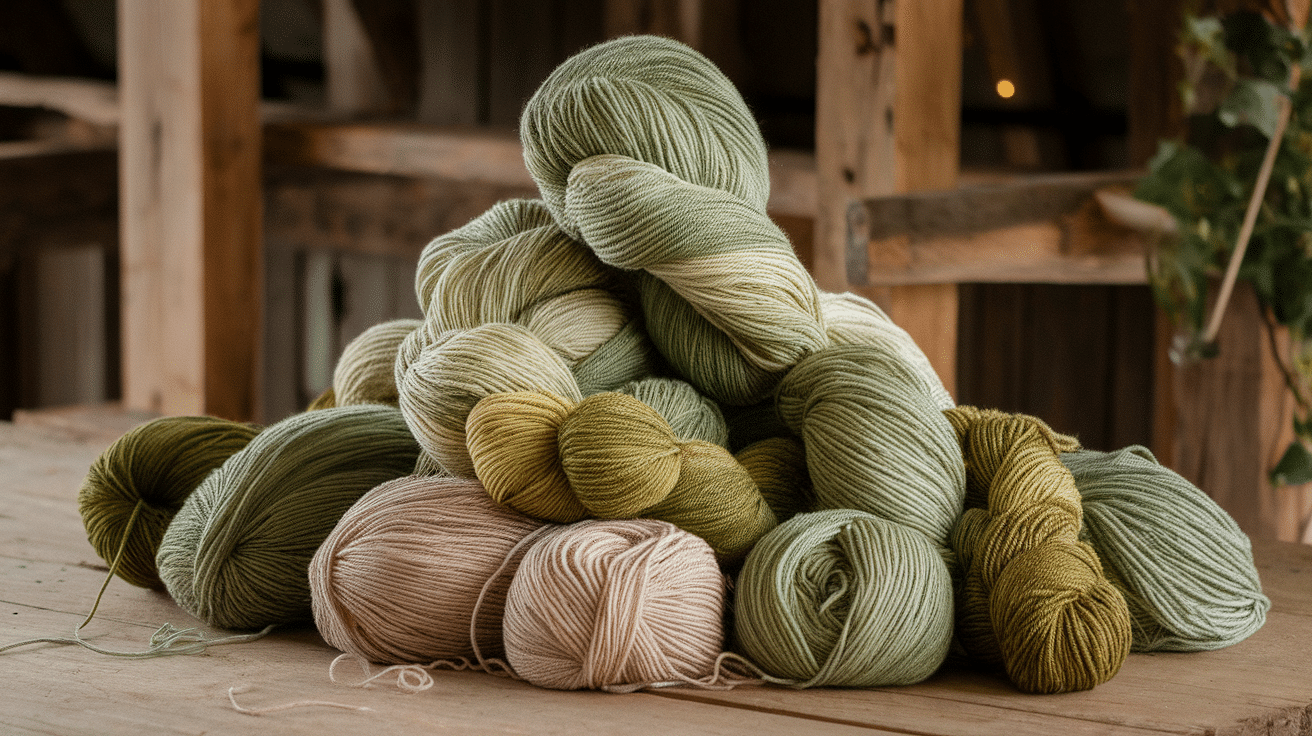
Hemp yarn is known for its durability and eco-friendliness, making it a great choice for items that require strength, such as bags, home décor, and accessories.
It’s a sustainable option that adds a natural, rustic feel to any project.
Unique features:
- Strong and durable, perfect for heavy-duty projects.
- Eco-friendly and biodegradable.
- Gives a natural, rustic texture to projects.
- Softens with use, making it more comfortable over time.
12. Nylon Yarn
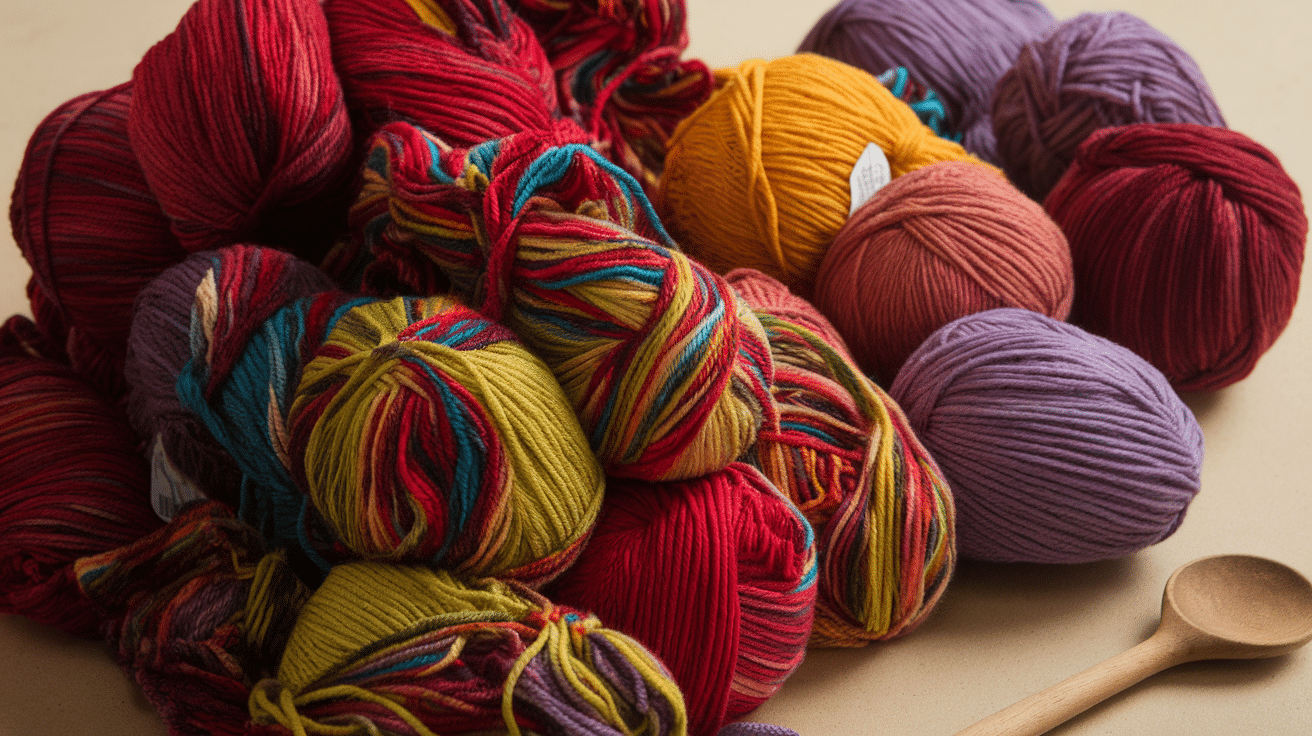
Nylon yarn is commonly used to add strength and elasticity to projects like socks, activewear, and accessories. It’s often blended with other fibers to improve durability and flexibility.
Unique features:
- Stretchy and elastic, great for activewear and socks.
- Increases durability and resilience of projects.
- Often used in blends to reinforce other fibers.
- It is resistant to wear and tear, making it a long-lasting choice.
13. Spaghetti Yarn (T-Shirt Yarn)
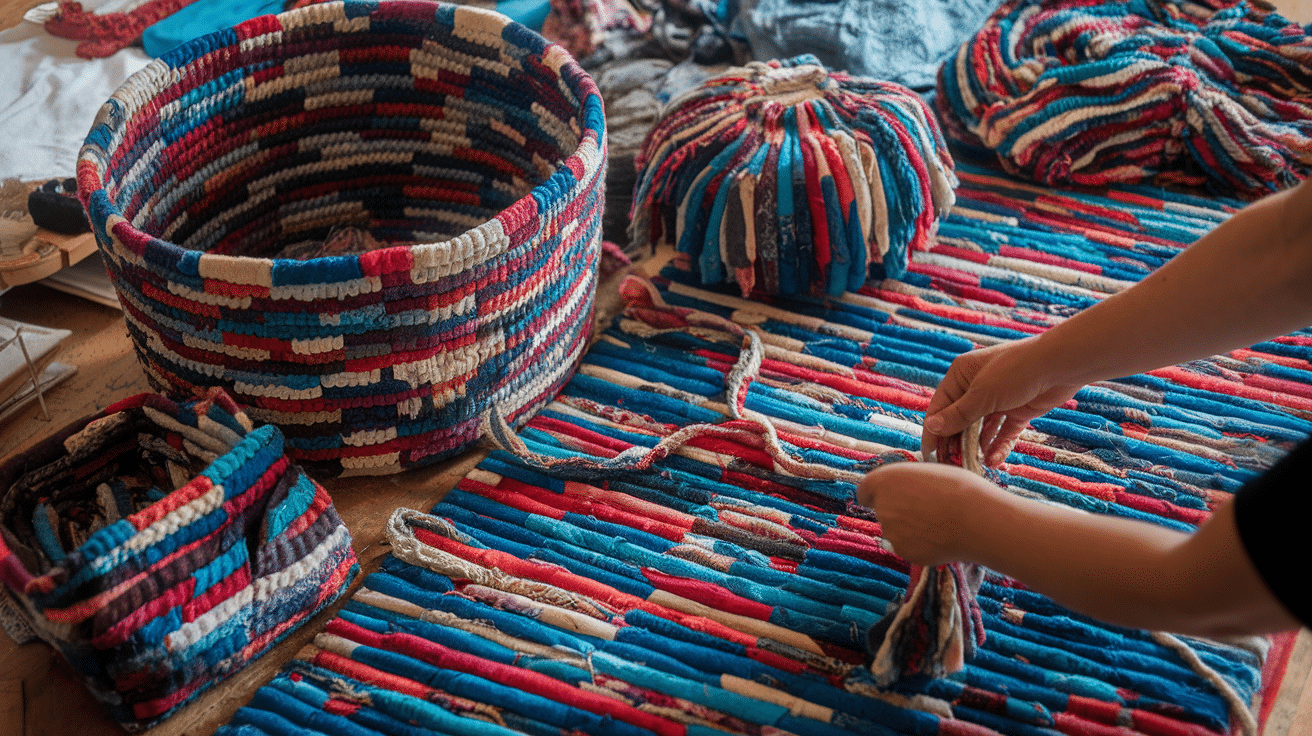
Spaghetti yarn, or T-shirt yarn, is made from repurposed fabric and is perfect for creating chunky, quick projects such as rugs, baskets, and bags.
It’s a sustainable and eco-friendly option for crafting.
Unique features:
- It is thick and chunky, making it perfect for fast projects.
- Eco-friendly, made from recycled materials.
- It is ideal for creating large, statement-making items.
- Has a unique texture, perfect for bold, heavy-duty projects.
14. Thread Yarn
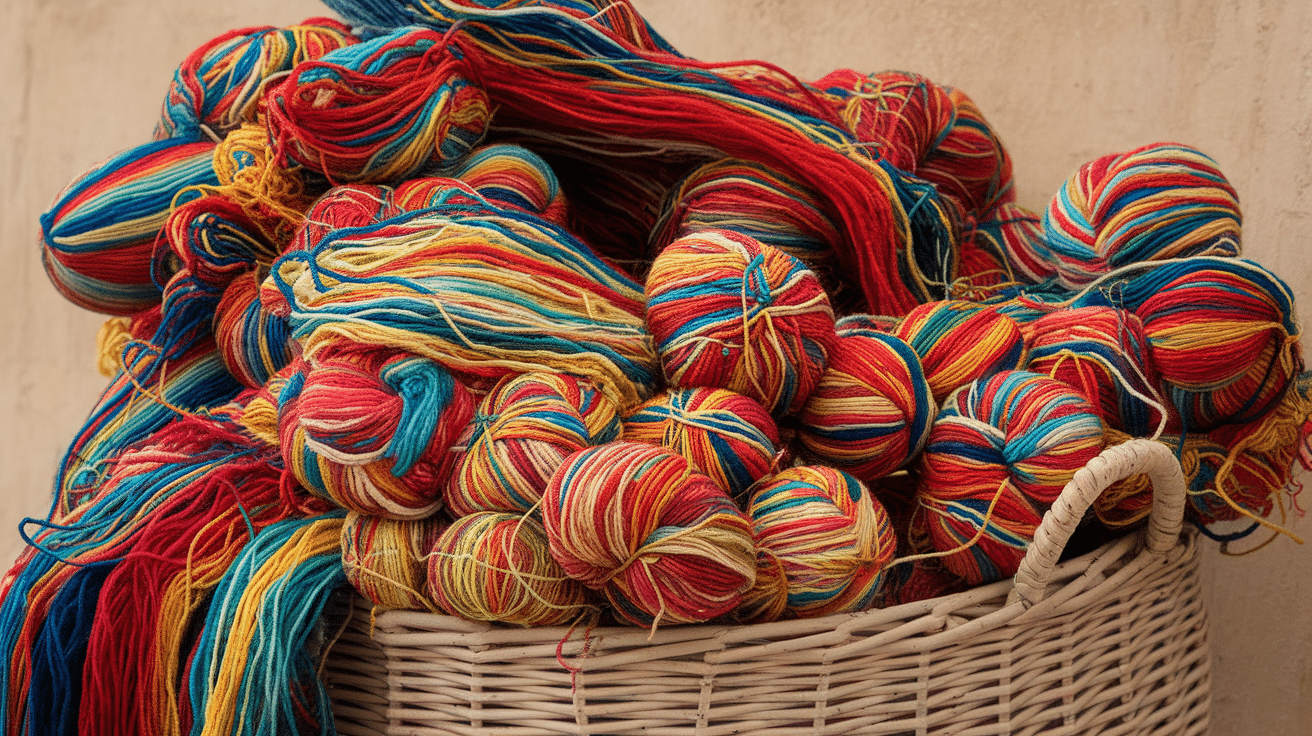
Thread yarn is best used for delicate crochet projects like lacework, doilies, and fine embroidery. It’s ideal for creating detailed and intricate designs that require precision and fine work.
Unique features:
- It is very fine and smooth, perfect for delicate, intricate designs.
- It is ideal for creating lace and detailed crochet work.
- Works well for embroidery and other detailed craft projects.
- It is lightweight and provides a refined, sophisticated finish.
15. Bulky Yarn

Bulky yarn is perfect for quick, warm projects like chunky scarves, hats, and blankets. It works up fast, which is great for those who want to finish their projects quickly or for last-minute gifts.
Unique features:
- Thick and chunky, ideal for fast projects.
- Provides excellent warmth and coziness.
- Great for creating heavy, textured garments.
- It works quickly, making it perfect for beginners or quick turnaround projects.
What Is Yarn?
Yarn is simply a long strand of fiber. It can be made from wool, cotton, acrylic, and other fibers.
These fibers are twisted or spun together to create a thick or thin thread.
Yarn is important in many crafts. Without yarn, knitting, crocheting, and weaving would not exist.
It’s the main material for these projects.
When you choose yarn, you pick the fabric that will shape your work.
The yarn’s texture, color, and strength can change your project’s looks and feels.
Here’s what yarn does in your craft:
- In knitting, it forms the fabric.
- In crochet, it becomes beautiful designs.
- In weaving, it creates patterns and textures.
So, the yarn you pick matters a lot!
Factors to Consider when Choosing Yarn
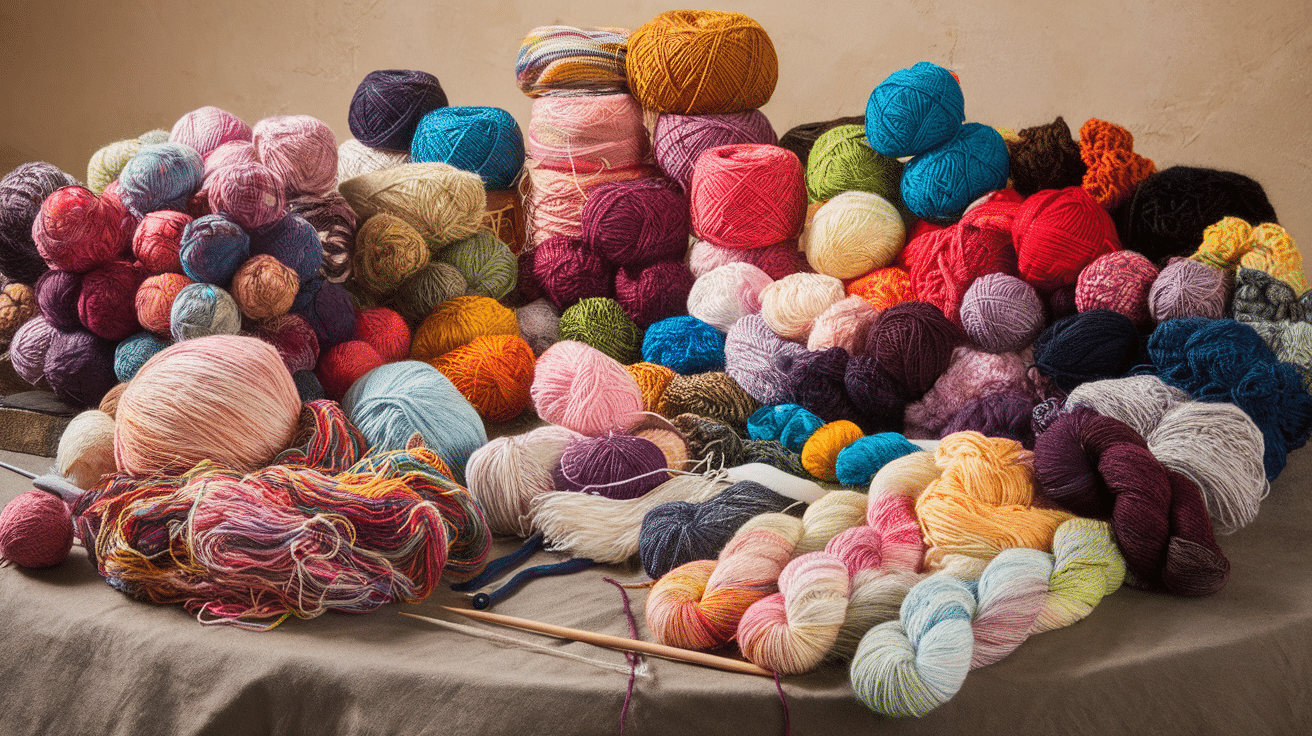
When I choose yarn, I think about a few important things. These factors help me decide which yarn will work best for my project.
Let’s see what I consider when I’m picking yarn:
1. Yarn Weight
- The weight of the yarn affects how thick or thin the project will be.
- If you want something light and airy, go for lightweight yarn.
- For a chunky, warm sweater, you’ll need heavyweight yarn.
- Always check the pattern for the recommended yarn weight.
2. Fiber Type
- Different fibers give different feels and properties.
- Wool is warm and breathable, great for winter projects.
- Cotton is smooth and soft, perfect for summer items.
- Acrylic is affordable and durable, good for everyday wear.
3. Texture
- Texture can make or break a project.
- Soft yarn is key for comfort when making a scarf or sweater.
- For bags or home decor, you might need a sturdier yarn.
4. Color
- The color of the yarn can affect the final look.
- Pick a color that suits your style or matches your project.
- Neutral colors are always a classic choice. But if you’re feeling bold, try brighter shades!
How to Care for Your Yarn?
Taking care of yarn is simple if you know what it needs. Different fibers need different care. Let’s break it down on how you can take care of your yarn.
Storage Matters
Where you keep your yarn affects its quality.
- Wool and natural fibers – Store in breathable bags or bins. They need air circulation. Keep them away from moths. Lavender sachets help.
- Cotton and plant fibers can be placed on open shelves. They don’t attract pests, and they keep dry.
- Synthetic yarns – These are easy. Store them anywhere dry and clean.
Avoid damp places. Moisture can cause mold.
Washing and Handling
Not all yarns like water. Some shrink. Some stretch. Read the yarn label first.
- Wool: Hand wash in cold water, using mild soap. Lay flat to dry. Never wring it out.
- Cotton – Machine wash on gentle. It gets softer with each wash. Air dry for best results.
- Acrylic – Toss it in the washer and dryer. It can handle heat.
- Luxury fibers (silk, alpaca, cashmere): Be gentle. Hand wash only. Use cool water and a special detergent. Lay flat to dry.
One rule for all: Keep yarn away from rough surfaces. Snags are no fun.
Take care of your yarn, and it will take care of you.
Tips for Working with Different Yarns
Not all yarns behave the same. Some are easy to work with, while others need extra care. Let’s look at some tips to help you handle different types.
Slippery Yarns
These yarns can slide right off your needles. To keep control:
- Use wooden or bamboo needles. They have more grip than metal ones.
- Adjust your tension. Try holding the yarn a bit tighter.
- Work in good lighting. Slippery yarns can be tricky to see.
Delicate Yarns
These fibers are soft but fragile. They can break or get fuzzy fast.
- Knit gently. Avoid pulling too hard.
- Use smooth needles. Rough edges can catch and damage the fibers.
- Keep your tension loose. This prevents stress on the yarn.
Thick or Textured Yarns
These can be fun but also frustrating. They catch on needles and hide stitches.
- Pick simple patterns. Complex stitches can get lost.
- Use larger needles. This helps show off the texture.
- Go slow. It’s easy to miss a stitch with these yarns.
Adjusting Your Technique
Every yarn needs a slightly different approach.
- Watch your tension. Some yarns need a looser hold, while others need more grip.
- Check your gauge. Always knit a small test swatch before starting a project.
- Use stitch markers. This helps you keep track, especially with tricky yarns.
The right adjustments make a big difference.
Try these tips, and your projects will turn out just right.
Conclusion
In this guide, I’ve shared tips on handling different yarns.
You’ve learned how to adjust your tension, choose the right needles, and work with tricky fibers like silk, cashmere, and textured yarns.
If you’ve struggled with yarn that slips, breaks or hides stitches, these tips will help. You’ll have more control, fewer mistakes, and better results.
Trust the process. With practice, you’ll get a feel for each type. Keep experimenting! Try different yarns and see what works best for your projects.
Every stitch teaches you something new. Now, grab your needles and start knitting with confidence!
Frequently Asked Questions
What Is the Best Yarn for Beginners?
Cotton or wool blends are great for beginners. They’re easy to handle, don’t split much, and hold their shape well. Avoid slippery or fuzzy yarns when starting.
How Do I Prevent Slippery Yarn From Sliding Off My Needles?
Use wooden or bamboo needles for better grip. Hold the yarn a bit tighter and knit in good lighting to keep track of your stitches.
Why Does My Yarn Keep Splitting?
Splitting happens with loosely spun yarns. Use blunt-tip needles, keep an even tension, and work slowly to avoid catching only part of the strand.


